How To Make A Turtle Tank Half Water Half Land?
Turtles require both land and water to thrive, but they, especially pet turtles, don’t get both natural elements in most tanks. It’s because their owners don’t know how to make a turtle tank half water, half land, or they don’t find appropriate turtle aquariums.
But you won’t face such problems as in this content; we have shared how you can make a turtle tank containing half water and half land effortlessly and indeed in a cinch. So, without delaying more, let’s get straight into it.
Read more about turtles blog:
How To Make A Turtle Tank Featuring Half Water And Half Land?
Before beginning with how you make a turtle aquarium half water and half land, let’s first disclose “what do you call an aquarium with land and water?”.
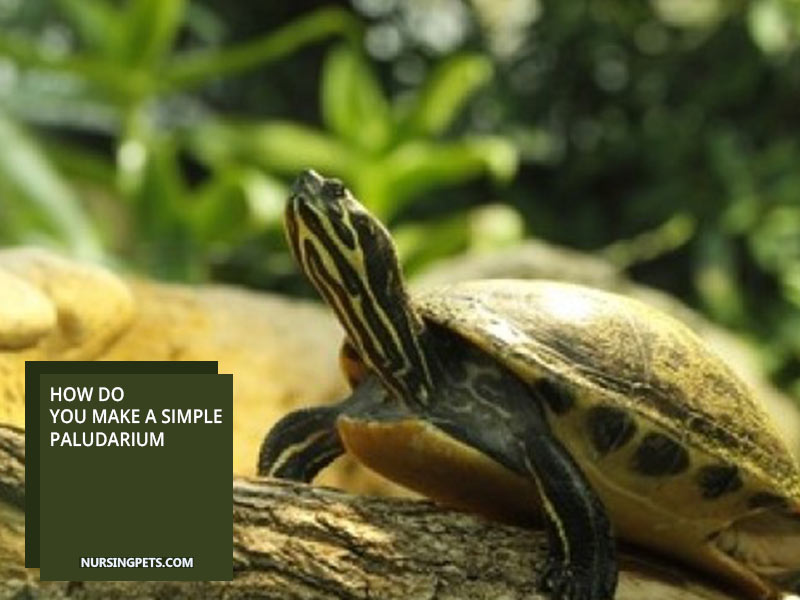
Half water half land aquarium is called a paludarium made up of a combination of water and land and designed for fish and other aquatic creatures. Now let’s discuss “how do you make a simple paludarium?”.
01. Selecting the Appropriate Tank:
Choosing the right tank should be your first consideration while building a turtle tank containing half water and half land. Many people make mistakes here as they don’t know how to grab the ideal tank.
Well, the rule of thumb is to pick a tank that can hold 10 gallons of water for every inch of the turtle you own. If you have a 6-inch turtle, you should purchase a 60-gallon aquarium.
The tank’s length should be three times the length of your turtle, and the turtle aquarium’s width should be twice the turtle’s length. The tank’s height must be twice or one and half times the turtle’s length.
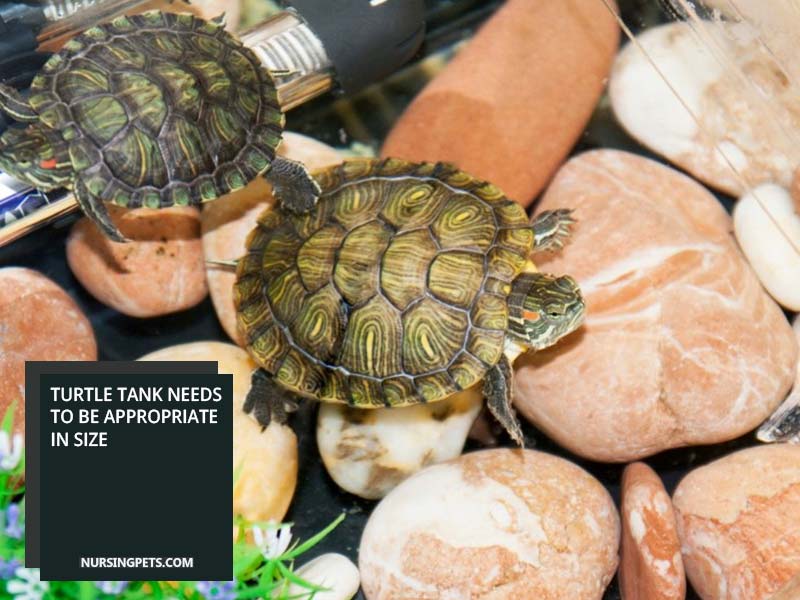
Besides, you need to ensure the enclosure of the tank where turtles don’t climb out features at least 12 inches of space. The tank’s glass should be incredibly thick, about 0.4 inches at least. Again, the turtle aquarium should be deeper than it is wide.
Last but not least, if you plan to add one more turtle, you must increase the tank size by half. For instance, if you wanna add a 5-inch turtle, you should pick an 85-gallon turtle tank.
02. Setting Up the Basking Site & Separating the Water & Land:
After choosing your turtle tank, it’s time to prepare the basking site for your turtles. FYI, the basking area should take up 50 percent space of the tank and must offer heat to turtles to let them dry off before returning to the water.
Also, this area should be easily accessible to turtles. That said, you can follow two methods to build your basking site. One is to purchase a ready-made floating dock.
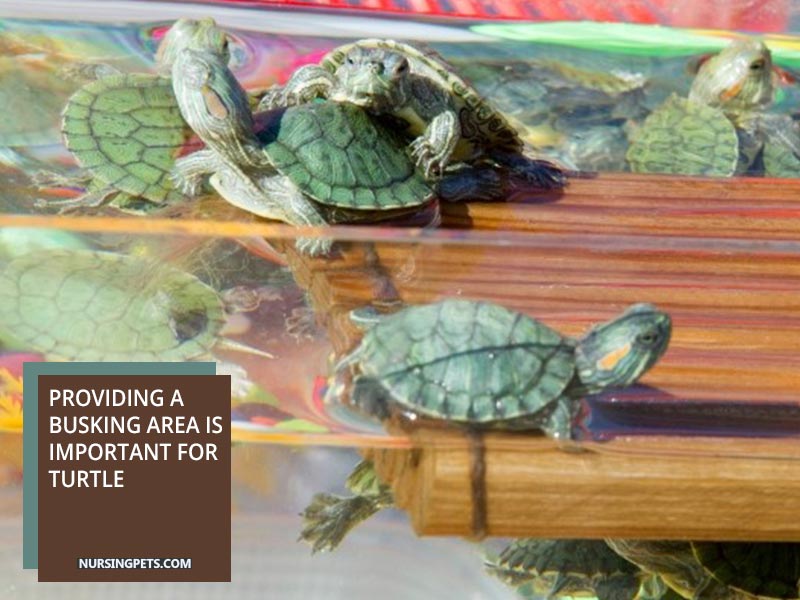
And the other is to build your own by using rocks and logs. Before creating one basking site, you need to separate this area with a divider.
Most turtle owners utilize Plexiglas as a divider, and you can opt for this material too, or you can use any waterproof and turtle-friendly material as a divider.
So, if you were wondering, “how do you separate water and land in a tank?” there you have your answer.
However, once you install the divider and pour rocks and other elements, it’s time to set up a heat lamp that will emulate the sun and provide turtles with the required warmth. That’s it; you are good to go with the next step.
03. Install The Filter:
Turtles can create havoc inside the tank and make water filthy in no time. And if you leave your beloved pet turtles in such dirty water for a prolonged period, they may develop life-threatening diseases.
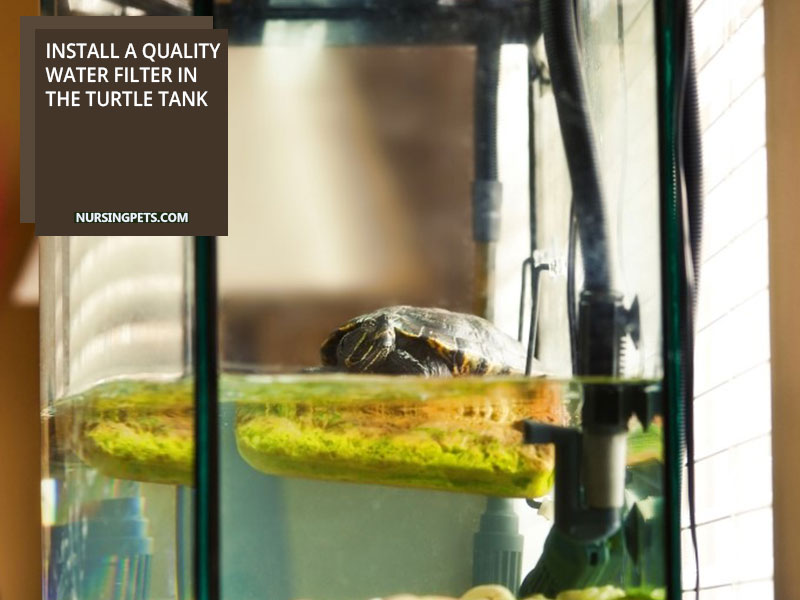
That’s why cautious pet owners always install the best quality water filter to remove water contaminants. You should also follow them and set up an appropriate water filter in your tank.
04. Install a Water Heater:
After installing the water filter, the water heater is another piece of equipment you should mount inside your tank. FYI, turtles require a specific water temperature to thrive and what temperature they need varies from species to species.
Most turtles need a water temperature of around 70 to 85 degrees Fahrenheit. Hence, you should install a water heater to give your pet turtles a comfy environment to survive.
05. Add Substrates:
It’s optional; you can either add substrates to your turtle tank or ignore them if you don’t have any live plants in the enclosure. However, if you plan to place substrates, we recommend going with sand, fluorites, and pebbles.
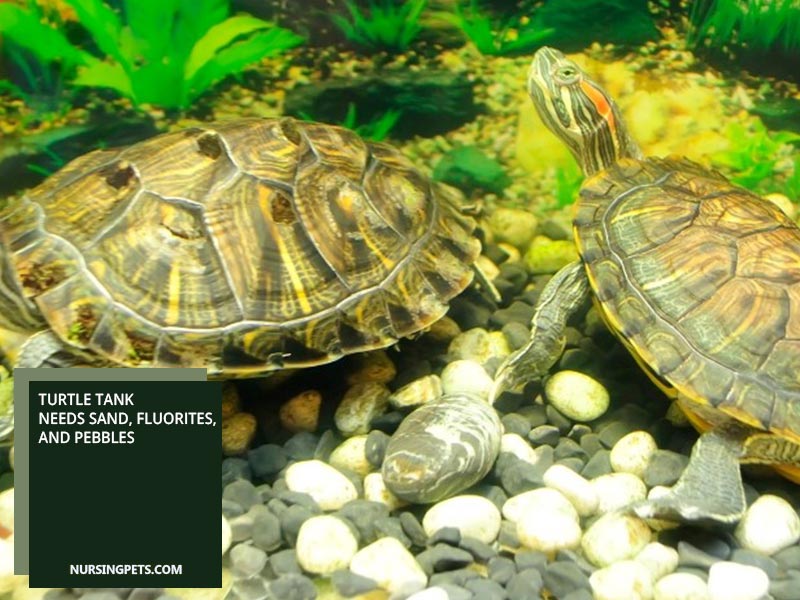
But to let you know that substrates can be a great hassle as turtles’ food can get stuck in between, and you will have difficulty cleaning them.
06. Placement of the Pieces of Equipment:
Where you place accessories such as heater and filter matters significantly when it is about keeping your pet turtles safe and healthy, that’s why ensure you put these items correctly.
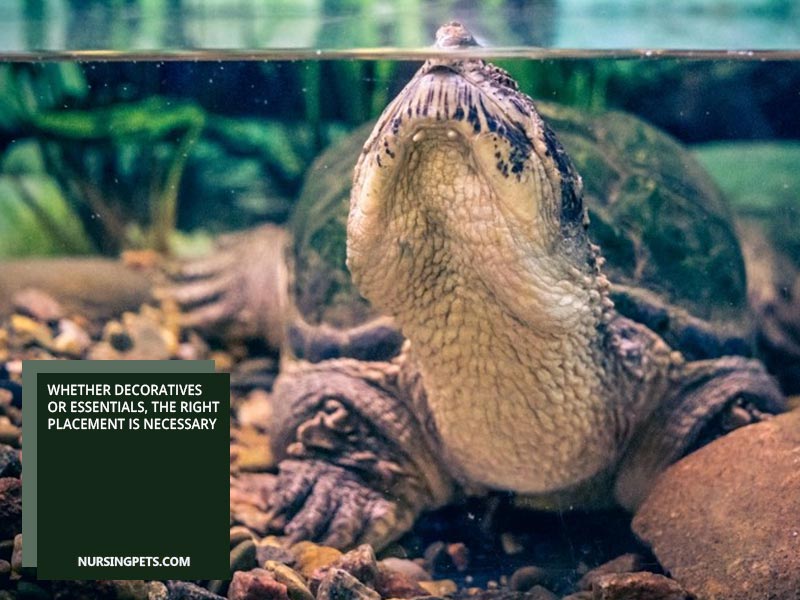
We recommend placing decorative objects along the tank’s edge as it allows turtles to swim freely. You should place plants in the turtle tank’s center and keep tall and sturdy items at the enclosure’s edge.
So, that’s all about the accessory placement you need to keep in mind while setting up your turtle tank.
07. Monitor The Tank Condition:
Although slight changes in the turtle tank’s environment don’t mean much, they will stack up with time. So, you need to monitor your tank to prevent the conditions from worsening.
To do that, you can utilize some items such as thermometers, UV meters, and hygrometers. These tools will give you the correct data on your tank’s condition.
08. Fill The Tank:
So, you are all set to pour your turtle aquarium with water and place your pet inside the tank. Before filling the tank with water, you need to consider a couple of facts.
- Try to pour clean and dechlorinated water. You can utilize the best quality conditioner to dechlorinate water.
- Ensure water has no ammonia.
- Ensure the water depth remains at least three-quarters of the turtle’s length.
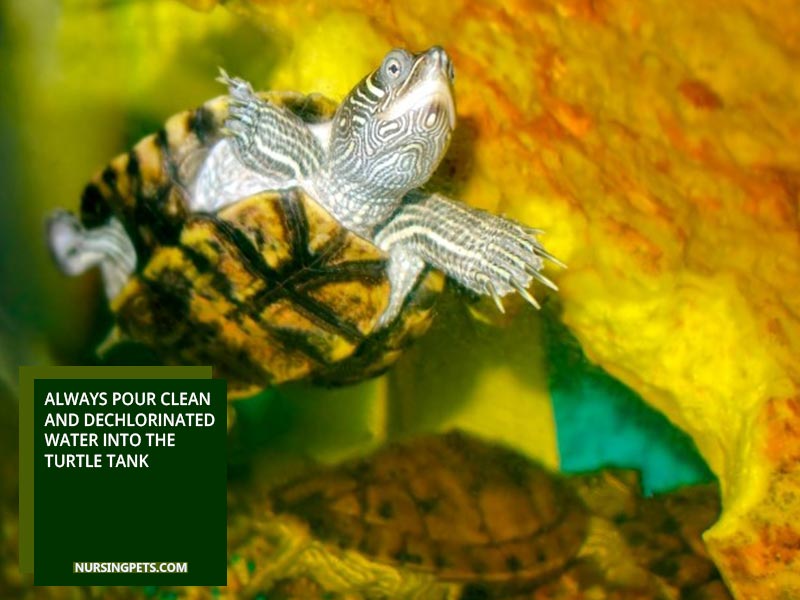
Some Essential Tips:
- Place the tank on a robust stand.
- Avoid keeping the turtle tank under direct sunlight, as it can damage the Plexiglas of the aquarium.
- Avoid overfilling the enclosure with decorative products, as your turtles may get trapped in those items.
That’s it; you have just made a turtle tank containing half water and half land.
Frequently Asked Questions:
Do Turtles Prefer Land or Water?
Turtles love being underwater. Some people confuse turtles with tortoises and think they prefer living on land. But the truth is that turtles can barely survive on land if they are out of water for an extended duration.
Do All Turtles Need Land?
Indeed, all turtles require land for basking, egg-laying, and temperature regulation purposes. So, if it’s even an aquatic turtle, it will need land to dry off after spending several hours underwater.
How Much Land Does a Turtle Need?
It depends on the turtle’s size. The rule of thumb here is that a turtle will need 25 to 50 percent space containing land in your turtle tank. Based on species, some may need more land space in the tank.
Wrapping Up:
Creating a paludarium isn’t as challenging as it seems. You can make a simple one effortlessly by following the guidelines shared in this article. It’s more like a plug-and-play job that anyone can perform.
We hope this content provides you with the information you were searching for and benefits you. If it does, you may share this blog post with your family and friends via Facebook, Twitter & Pinterest. That’s all for this one.
Image Source:
Article Reference:

